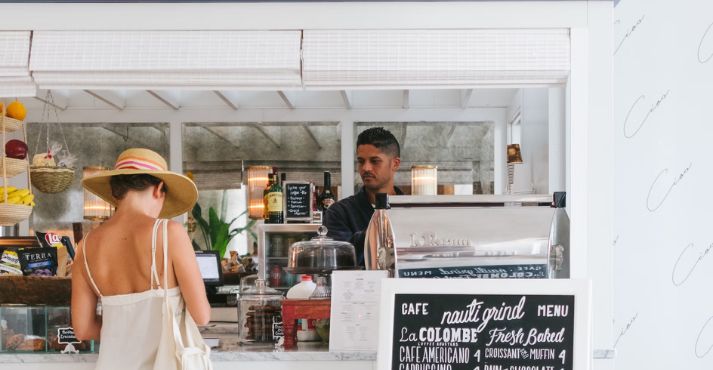In the world of food, where flavors abound and choices are aplenty, a concept is gaining prominence – Menu Labeling.
This concept isn’t just about listing dishes; it’s about something more significant – nutritional transparency.
Menu Labeling is a way for restaurants and eateries to provide customers with vital information about the nutritional content of their food.
It’s like a window into the nutritional aspect of your meal, allowing you to make informed choices about what you eat.
In this article, we’ll delve into the world of Menu Labeling, exploring its definition, purpose, and impact on consumers’ choices.
Defining Menu Labeling
Menu labeling means more than just the dish names and prices. It’s a peek behind the curtain, showing you details like calorie information and nutrient details.
You’ll see how much energy a dish gives you (calories) and what nutrients it’s packed with, such as protein and vitamins. Plus, if you’re concerned about allergies or specific dietary needs, you’ll find the ingredient information too.
Why It’s Useful?
Picture this: You’re choosing between two meals, and one has way more calories. With menu labeling, you’ll spot that right away. It’s like having a food detective helping you make choices that match what you want to eat.
Eating well means knowing what’s on your plate. Menu labeling acts as your guide. It’s handy if you’re watching calories or need to stay away from certain ingredients. It’s about selecting food that suits your needs – and menu labeling makes it more accessible.
Purpose and Benefits
The Purpose of Menu Labeling
When you’re at a restaurant, looking over the menu isn’t just about choosing a meal; it’s about making the right decision for you. This is where menu labeling steps in. Its main job is to help you make informed choices about your diet.
Navigating Health-Conscious Dining

Imagine you’re trying to eat healthier or sticking to a specific diet.
Showing you the nutritional information of each dish gives you the tools to make choices that match your health goals. It’s like having a map that guides you towards options that fit your needs.
Aligning with Dietary Goals
Everyone’s different regarding food – some people want fewer calories, others want more protein. With menu labeling, you’re in control. You can see what’s in each dish and decide which aligns with your preferences. It’s like tailoring your meal to fit what you’re looking for.
The Power of Informed Decisions
Informed dining decisions aren’t just about calories; they’re about making choices that make you feel good. Menu labeling empowers you to understand what you’re eating and how it fits into your overall health plan.
It’s about more than just the food; it’s about nurturing your well-being through your choices.
Menu Labeling and Healthier Dining Choices
When facing a menu full of tempting dishes, picking the healthiest option is not always easy. That’s where menu labeling comes in as your ally. It’s like having a guide that nudges you toward making smarter food choices for your well-being.
The Power of Nutritional Awareness
Ever heard the saying “knowledge is power“? Well, it holds when it comes to what you eat. Menu labeling gives you a peek into the nutritional value of each dish.
You get to see the calories, the nutrients, and ingredients. This information makes you more likely to lean towards choices that align with your wellness goals.
Opting for Wellness-Centric Dining
Healthier selections don’t have to be a shot in the dark. With menu labeling, you’re equipped to make conscious decisions. It’s like having a little voice that says, “Hey, here’s how this dish can contribute to your well-being.”
Whether watching your weight, trying to eat more protein, or aiming for balanced nutrition, menu labeling has your back.
Smart Food Selections
Making more innovative food selections isn’t about giving up deliciousness; it’s about making choices that make you feel good inside and out. Menu labeling acts as your partner in this journey.
It encourages you to consider not just taste but also the impact of your choices on your health. It’s a win-win situation – great flavors and a great feeling.
Raising Awareness of Hidden Ingredients

When looking at a dish on a menu, what you see might not be all there is. There could be hidden ingredients – stuff you might not know is there. This is where menu labeling begins, shedding light on what’s in your food.
Unveiling Ingredient Transparency
Have you ever had to avoid certain ingredients due to allergies or dietary restrictions? Menu labeling is your ally. It’s like a spotlight on the ingredients, showing you exactly what’s in each dish.
This way, you can make choices that keep you safe and aligned with your dietary needs. It’s a reassurance that you’re in control.
Considering Dietary Restrictions
Imagine you’re allergic to nuts or need to avoid gluten. Menu labeling is like a personal assistant that makes sure you’re well-informed. Listing the ingredients helps you dodge those allergens and ingredients that might not suit you.
It’s a safety net, ensuring you can enjoy your meal without worry.
Avoiding Allergen Contamination
Even a tiny amount of an allergen can cause trouble for those with allergies. Menu labeling shows you the ingredients and helps prevent allergen contamination. It’s saying, “Hey, we’re looking out for you. Your health matters.”
Impact on Consumer Behavior
The Influence of Menu Labeling on Choices
How do you decide what to order when facing a menu of options? That’s where menu labeling plays a significant role – it shapes your purchase decisions.
Nutritional Impact on Choices
Believe it or not, those numbers beside the dishes matter. Menu labeling can sway your choices based on what’s good for you. When you see the nutritional information, you’re more likely to buy items with fewer calories or healthier nutrients.
It’s like a helpful hint, guiding you toward better options.
Calorie-Conscious Selection
Let’s say you’re watching your calorie intake. Menu labeling becomes your best friend. Those numbers give you the power to decide wisely. You might opt for a dish that’s lower in calories but still delicious. It’s a win-win – great taste without compromising your health goals.
Informed Dining Selections
Making choices when you’re informed is a game-changer. Menu labeling empowers you to make selections that align with your preferences. Knowing what’s in your food and how it affects your body is like having a secret weapon.
Guiding Purchase Decisions through Nutritional Data
Picture this: You’re torn between two dishes, one rich in calories and the other with healthier nutrients. Menu labeling guides you. It’s like having a friend who knows the inside scoop on what’s good for you.
Your purchase decisions become more than taste-driven; they become health-conscious.
Addressing Dietary Preferences
Dietary preferences and restrictions can make ordering food a bit more complicated. This is where menu labeling ensures everyone’s unique needs are met and addressed.
Catering to Special Diets
Whether you’re a vegetarian, vegan, or need to avoid gluten, menu labeling is your go-to helper. It’s like having a menu translator that highlights suitable options for your specific diet. You can quickly spot dishes that match your preferences.
Meeting Dietary Needs
Imagine entering a restaurant knowing you can easily find dishes that suit your dietary requirements. Menu labeling makes it possible. It’s like a customized guide, helping you navigate the menu and discover meals that align with your needs.
Suitable Food Identification
For those with specific diets, finding suitable food is a priority. Menu labeling takes the guesswork out of it. Providing detailed information about each dish helps you identify options that won’t just fill your stomach but also fit your dietary preferences perfectly.
Creating Conscious Consumption
Dining isn’t just about filling your stomach; it’s also about making conscious choices for your well-being. This is where menu labeling steps in, fostering a mindful approach to what you eat.
Mindful Eating
Have you ever heard of mindful eating? It’s about being present in the moment and genuinely savoring your food. Menu labeling supports this practice by making you aware of what you’re about to eat. It’s like a reminder to slow down and enjoy your meal.
Portion Control Awareness
Sometimes, portion sizes can be deceptive. Menu labeling puts the truth on the table. It shows you how much you’re about to have. This can help you make smarter choices about how much you eat, promoting healthier dining practices.
Healthier Dining Practices
As you explore the menu, you’re not just reading dish names – you’re making choices that impact your health. Menu labeling guides you towards healthier options. It’s like having a mentor nudging you towards meals that are good for your body.
Legal Regulations and Implementation
Adhering to Government Mandates for Transparency
Regarding menu labeling, there’s more than just good practice involved – there are legal rules, too. This is where government mandates ensure that restaurants are transparent and customers well-informed.
Compliance with Laws
Different regions have different rules, but the goal is to ensure you get the real story when you look at a menu.
These rules are like a script that restaurants follow to provide accurate menu labeling. It’s all about adhering to the law and giving you the information you deserve.
Transparency Enforcement
Imagine you’re in a different country and want to know what’s in your meal. Government mandates for menu labeling ensure that you can make informed choices no matter where you are.
It’s like a language that all restaurants speak – the language of transparency in food industry.
Regulatory Compliance
Think of government mandates as a set of guidelines that restaurants need to follow. It’s like a checklist, ensuring food safety and legal regulations are met when sharing nutritional information.
This way, whether you’re watching your calories or checking for allergens, you have the data you need.
Challenges and Industry Adaptation
As the food industry moves towards more transparent practices, there are some hurdles to overcome, especially regarding menu labeling. Let’s look at the challenges faced and how the industry is adapting.
Overcoming Implementation Challenges
Picture this: a restaurant already has a menu loved by customers. Now, they need to add nutritional information. It sounds simple, but it’s a puzzle to solve. Overcoming implementation challenges means finding a way to fit all that data without overwhelming the menu.
Integrating Nutritional Information
Adding numbers to a menu isn’t as easy as it seems. Restaurants must figure out how to integrate nutritional information without disrupting the dining experience. It’s like finding the right balance between sharing data and maintaining the excitement of choosing a meal.
Adapting to Regulation Changes
Government mandates might change, and restaurants need to change with them. It’s like a dance, where restaurants adapt their menus to meet the latest rules while offering delicious options.
Adapting to regulation changes is about staying compliant without losing the essence of what makes each restaurant unique.
Conclusion
In the flavorful world of dining, where choices are aplenty, menu labeling has emerged as a beacon of transparency and informed decision-making.
It’s more than just numbers; it’s a tool that empowers you to make choices aligned with your health goals and dietary preferences.
As we wrap up our journey through the world of menu labeling, take a moment to appreciate restaurants’ efforts to ensure your dining choices are well-informed.
The next time you explore a menu, you’ll see more than just dishes; you’ll see a commitment to your health, wellness, and enjoyment.































